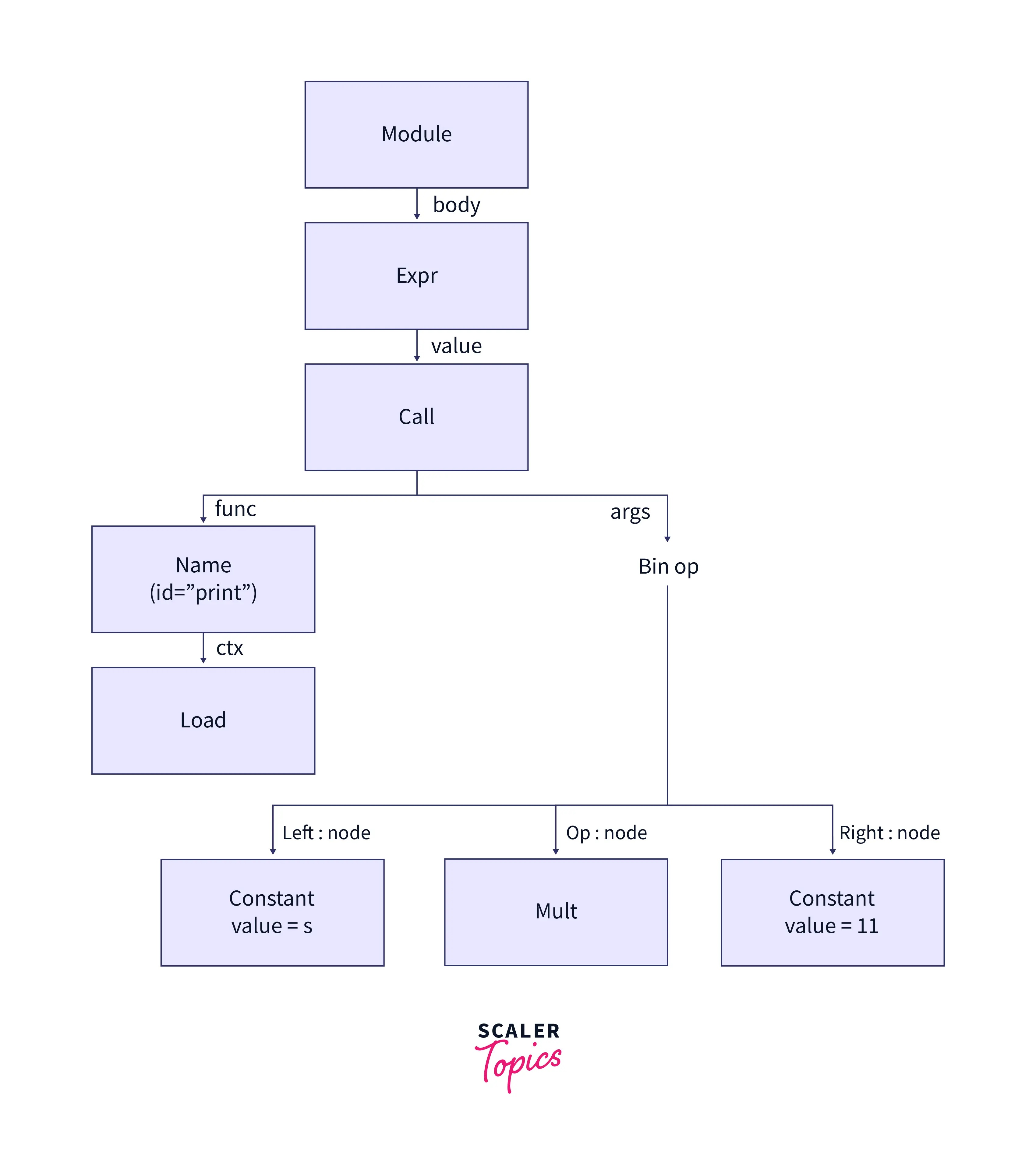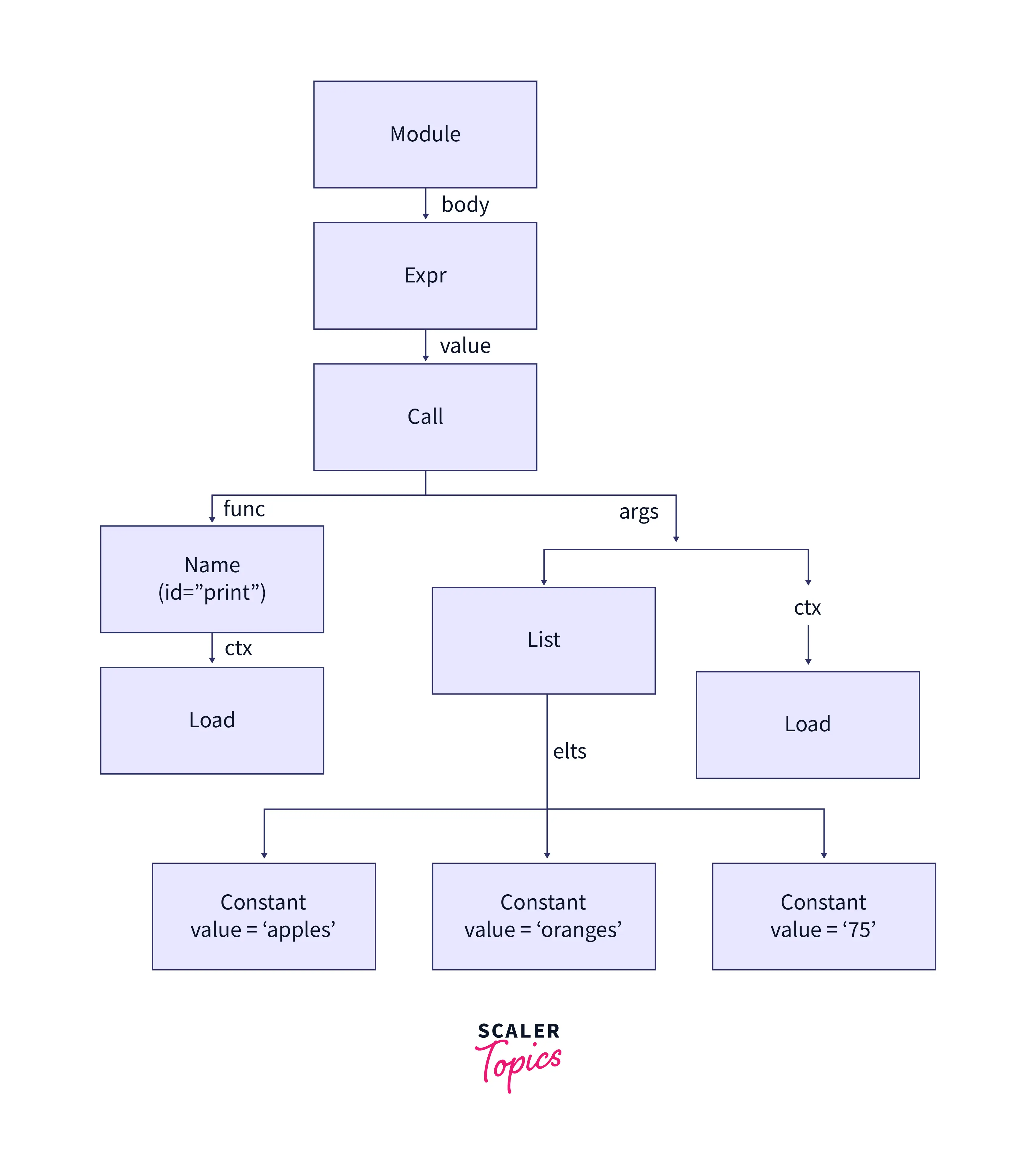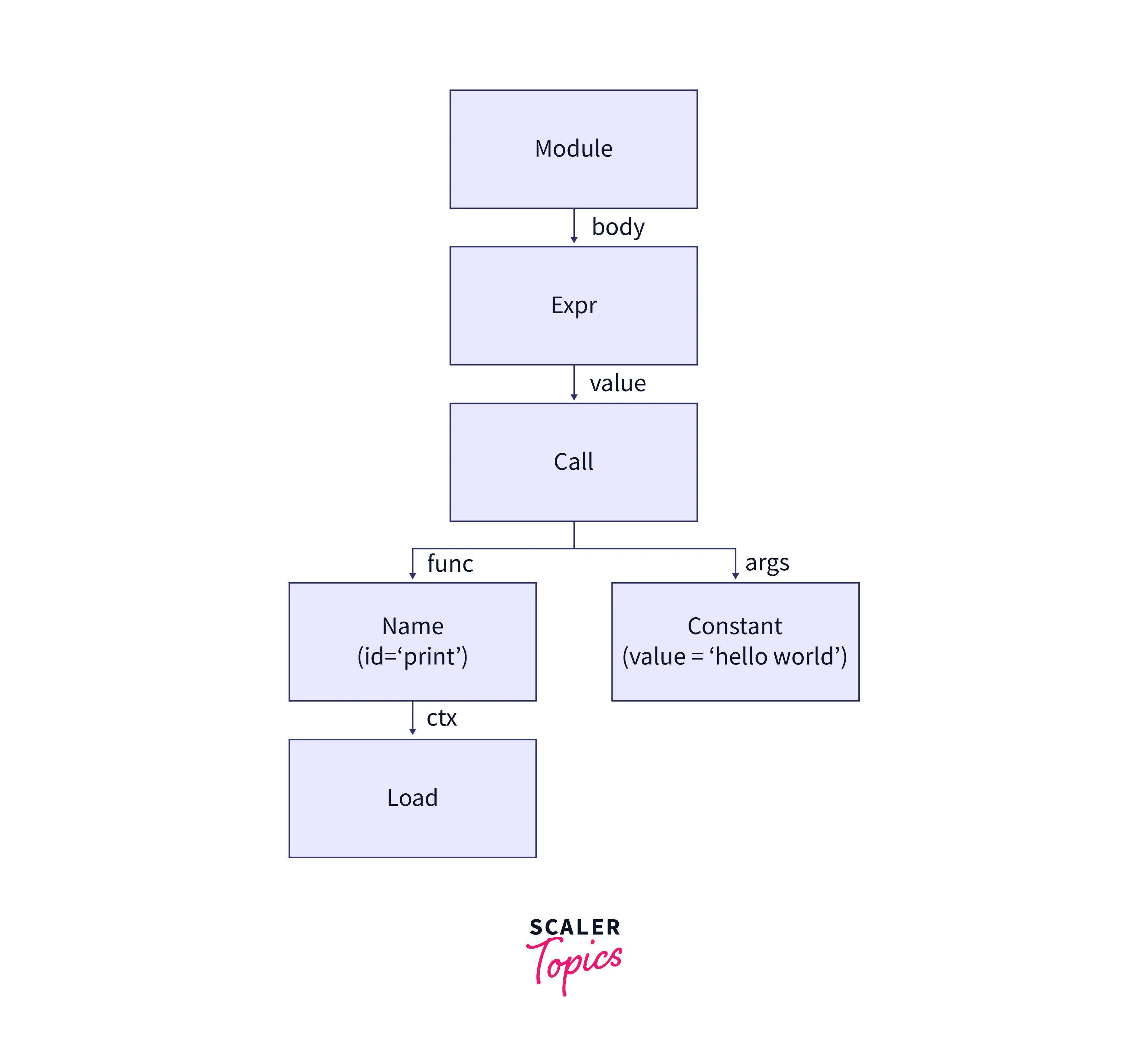Python AST Module

Overview
The AST package is open-source that helps in parsing, analyzing, and generating Python code and transforming Python code into ASTs. Each node of an AST is represented by a different Python class. This tree structure contains the content of the document.
Python AST Module
AST (Abstract Syntax Tree) is a module present in the python standard library. Before transforming python code to “byte code”(.pyc files), it is converted to an AST. The most important function of the AST module is to generate this AST.
The interpreter follows pre-written instructions that translate the Python code into instructions that a machine can run. AST follows the following steps to generate machine code from Python code.
- At the initial step, code is parsed into smaller chunks called tokens. These tokens are based on a set of pre-defined rules for things that should be treated differently. For instance, the token for the keyword if is different from the token of a numeric value like 42.
- An Abstract Syntax tree (AST) is generated from these raw lists of tokens.
- From the AST, the Python online compiler produces lower-level instruction known as bytecode, which is very generic and can be run by the computer efficiently.
- The interpreter can finally run the code using the bytecode instructions.
Compilation Modes
The three modes available to compile the code are:
- exec mode to execute the normal Python code.
- eval mode to return a result after evaluating Python's expression.
- single mode to execute one statement at a time, like the Python shell.
Code Execution and Expression Evaluation
Python Code Compilation in single mode
In the following example, the Python code is compiled in a single mode.
Code
Output
Python Code Execution
In the following example, the Python code is run, using the AST module. The compile() and exec() functions execute the AST.
Code
Output
Expression Evaluation
In the following example, the AST module evaluates the Python expression exp and returns the result after evaluation using the eval() function.
Code
Output
Multiline ASTs Creation
The following example shows how the AST module is used to create multi-line ASTs and how it handles and distributes more than one operation. The output of the dump() function reflects how the code is distributed into different components.
Code
Output
NodeTransformer and NodeVisitor Classes
In the initial step, the code is parsed. The ast module has the NodeTransformer and NodeVisitor. The former is used to take different types and modify them as per requirement. The NodeVisitor class calls the visit function every time the tree is traversed to get more control over the nodes. The DemoVisitor class and the DemoTransformer class inherit the NodeVisitor and NodeTransformer classes, respectively.
Code
Output
Analyzing AST
After getting the tree, the Analyzer follows the visitor pattern. The NodeVisitor class can track any node in Python. However, to visit a particular type of node a method similar to visit_<node type> is implemented. The visit() method works just like the visit_<node type> method whenever that type of node is encountered while traversing through the tree structure.
AST as an Analysis Tool
The byte code generated from the Python code is primitive and designed for machines as it makes the interpreter fast. Humans can not read this. Though ASTs are not very human-friendly, they are more legible than the byte code representation. ASTs contain structured information that makes drawing an idea about the original Python code easier.
When to Use Python AST Module?
- Abstract Syntax Tree parses the source code and finds the errors in the code.
- It is used as a custom Python interpreter.
- Python AST module can analyze the static code.
Examples of Python AST Module
The following examples illustrate how ASTs are created and executed. There are two fundamental functions:
- parse - interpret and create an AST from a string containing Python code
- dump - prints the abstract syntax tree as a string The formatted string contains information about the fields and values of the tree. The compile() and exec() functions execute the AST.
Handling Multiple Operations with Python AST
The following example shows how the AST module is used to create multi-line ASTs and how it handles and distributes more than one operation. works on two numbers and then shows the output.
Code
Output
Arithmetic Operation Visualization by Python AST Module
In this example, the tree shows how the Mult() operation works on two numbers and then shows the output.

Code
Output
AST Visualization for a List
The following example illustrates an AST for printing a list.

Code
Output
AST Visualization for a String
The following example illustrates an AST for printing a string.

Code
Output
Conclusion
- AST is a module in Python standard library that builds an Abstract Syntax Tree.
- Automation testing tools and code coverage tools depend on AST to parse the source code and find errors in code.
- The two fundamental functions are parse and dump.
- The three compilation modes are exec, eval, and single.
- AST module helps to build the Syntax tree for code which may include single or multiple strings, lists, arithmetic operations, etc.
